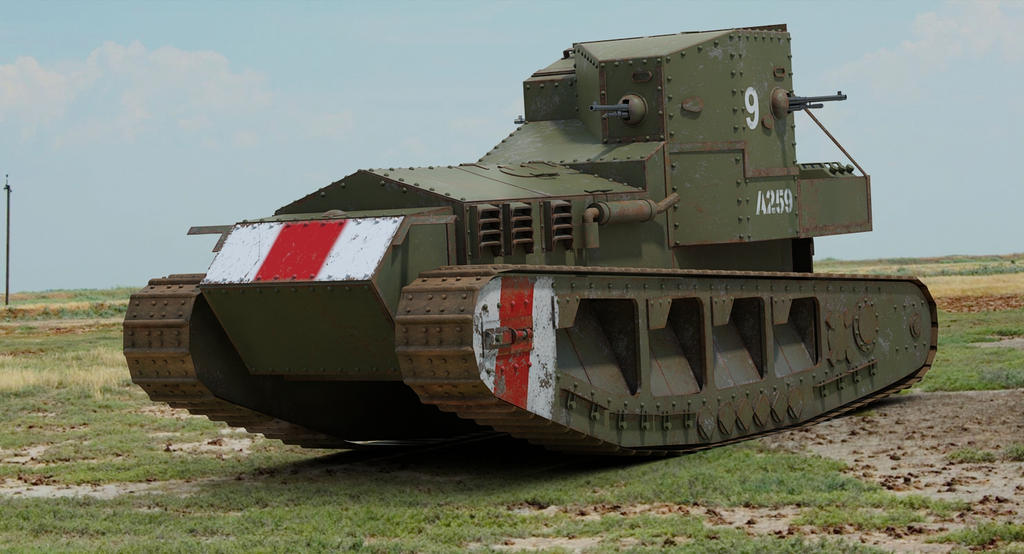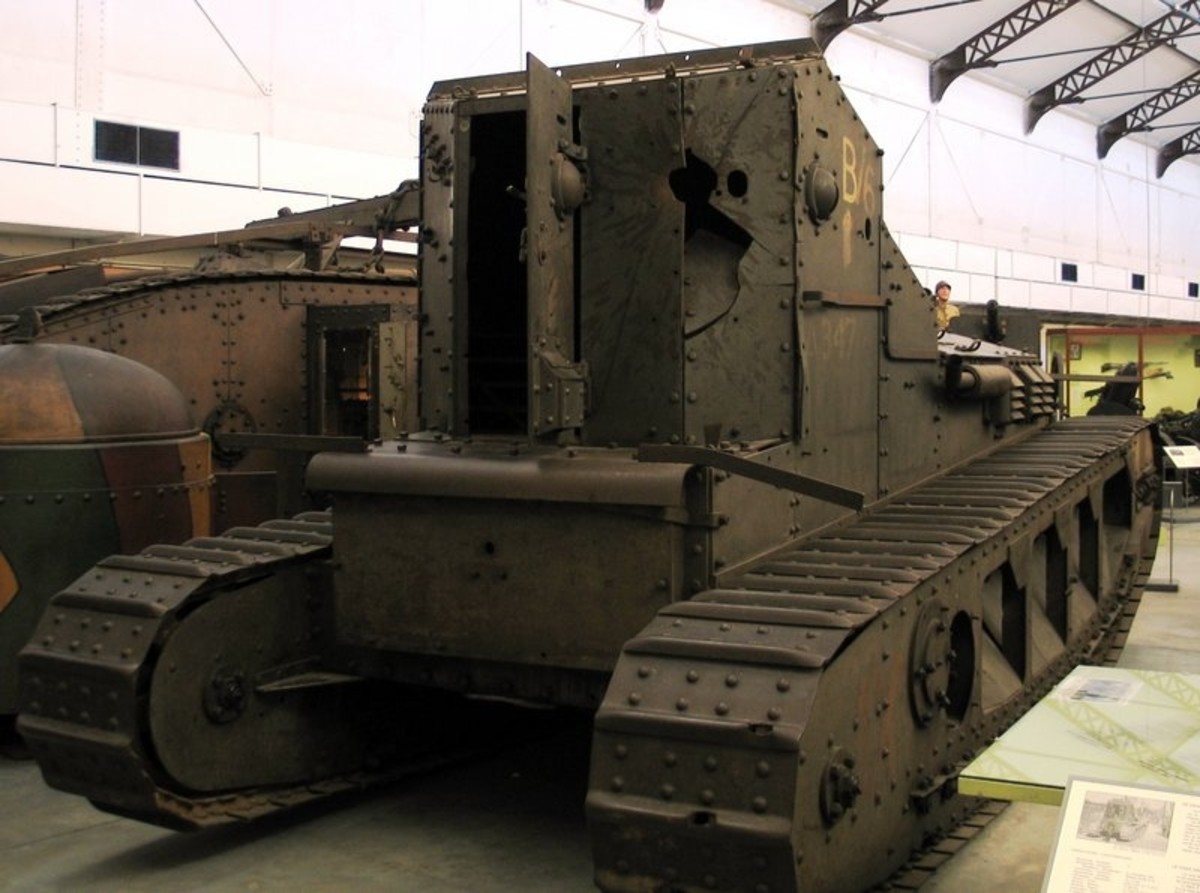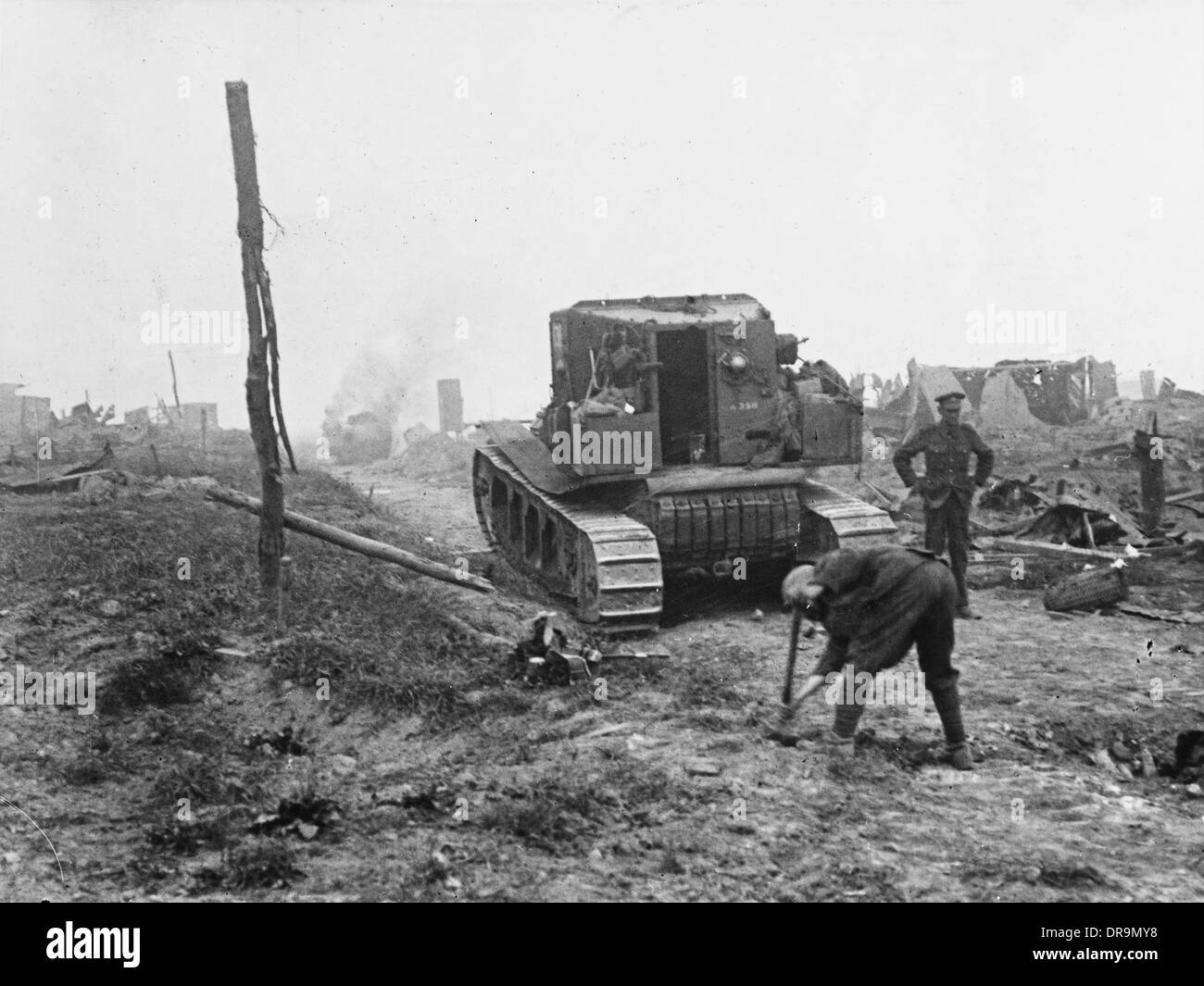
Medium Tank Whippet. Bovington Tank Museum Tanks military, French tanks, Army tanks
The Medium Mark A Whippet was a British tank of the First World War. It was intended to complement the slower British heavy tanks by using its relative mobility and speed in exploiting any break in the enemy lines. [2] Development and production history

Whippet tank by sandu61 on DeviantArt
The Whippet tanks weighed 14 tons, and were about eight feet long. The Whippet was designed in 1917, and first went into battle in March 1918, according to the website for the U.K.'s Tank Museum. It had a top speed of eight miles per hour, more than twice as fast as a heavy tank like the Mark II, so it was nicknamed the Whippet, the tank museum description notes.

Mark A Whippet Ww1 tanks, Tanks military, Army tanks
On 31 May 1918, a small tank designed by a famous French car maker and a brilliant army officer saw its first action. Its inspired design still lives on in the tanks of today, 100 years.

Whippet tank on a muddy battlefield, Morcourt, France, World War I posters & prints by Realistic
The Whippet was a proposal by William Tritton, the Managing Director of Fosters of Lincoln, the builders of the first prototype tank - 'Little Willie' - and 'Mother' the first rhomboid tank that would go into production as the Mark I. Tritton thought a faster (and cheaper) tank could be produced to exploit the gaps the heavier tanks made.

Whippet Tank (The Tank Museum, Bovington.) TankPorn
The Mark A Whippet was a British medium tank that first saw combat in March of 1918 during the massive German Spring Offensive. They were meant to take advantage of the holes made in the German lines by their much heavier and slower cousins, the Mark IV and Mark V tanks.

Whippet tank on a muddy battlefield, Morcourt, France, World War I posters & prints by Realistic
medium mark a whippet tank - read online for free. four french-designed hotchkiss light machine guns provided excellent firepower against enemy troops as the whippet advanced rapidly through breaches in german trench lines. a pair of four-cylinder, side valve jb4 petrol engines gave the whippet a rem

Whippet Tank 1918 Stock Photo Alamy
On 24 th /25 th March 1918, with the Germans drawing close, the surviving Whippet tanks of 3 rd and 9 th Battalions were ordered to make for a new camp at Henencourt, however other functions had to be performed first. Among them four sections of C Company, 3 rd Tank Battalion, then comprising twelve operational tanks, was ordered on 26 th March, to head for the village of Colincamps, south of.
.jpg)
GWB002 Medium Mark A, Whippet Tank, “Caesar II” A259 Bapaume, 28th August 1918.
For a time it was common to describe any of the lighter tank designs as a Whippet, even the French Renault FT. It had become a generic name. The German Leichter Kampfwagen — developed from December 1917 — being also a turret-less tank with the engine in front resembled the Whippet, but was a smaller vehicle with thinner armour. Combat history

World War I History The Medium Mark A Whippet Tank Owlcation
The tank fulfilled its mission of exploiting breaches in enemy defences with rapid mobility The Whippet became a distinctive sight on the battlefield, with its turret at the rear of the chassis and twin engines forward of the crew compartment The Whippet stood high off the ground, its squared turret constructed of riveted plates to provide protection against smallarms fire Four French.

戦車
(1) Haig, who was not given this information, ordered a massed tank attack at Artois. Launched at dawn on 20th November, without preliminary bombardment, the attack completely surprised the German Army defending that part of the Western Front.

Whippet Tank 1918 Stock Photo Alamy
They toured the towns and cities of Great Britain from November 1917 to the end of WW1 on 11th November 1918. This was an encouragement for people to buy government War Bonds and War Savings Certificates. This tank is No.130 Nelson tank and was on display in Trafalgar Square, London. Beutepanzer Mark IV Male.

Skipper and Gunner of Whippet Tank with Hatches Open, France by Unknown Artist 1918 World
Medium tank (1916) France - 400 built total The first French tank Behind the idea of an armored mobile platform for guns and machine-guns are two men on the Allied side. These were col. Ernest Swinton (United Kingdom) and Col. Estienne (France).

Whippet WW 1 tank in the new hall rikdom Flickr
The Whippet tank is what its name implies; a Whippet, a breed of fast hunting dogs used for chasing prey down and catching it. 'Fast' here being comparative. Compared to the much larger and heavier British tanks of WW1, the famous 'rhomboid' shaped machines, these really were Whippets.

1/35 Takom WWI Whippet Tank by Bard Fleistad at the Panhandle Armor Modelers meeting at Bobe's
History World War I Schneider CA1, the first French tank While the British began the design and use of tanks in World War I, France at the same time developed its own tracked AFVs, but the situation there was very different. In Britain a single committee had coordinated design, while the major industries remained passive.

Medium Mk a Whippet
The tank section of the Imperial War Museum, Lambeth Road, showing the French Whippet tank, models of British tanks, and specimens of tank guns.

Mark A Whippet 1 Medium Mark A Whippet Wikipedia Tanks military, Whippet, Army tanks
On 8 August 1918, British and Imperial forces in co-operation with the French, launched a major attack against the Germans astride the River Somme, east of the city of Amiens.